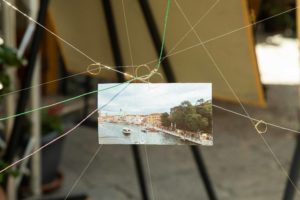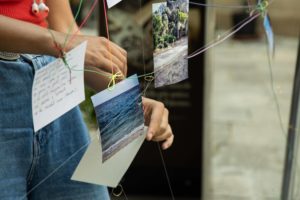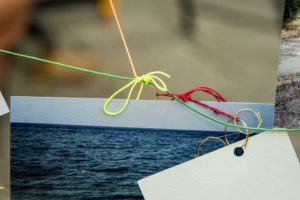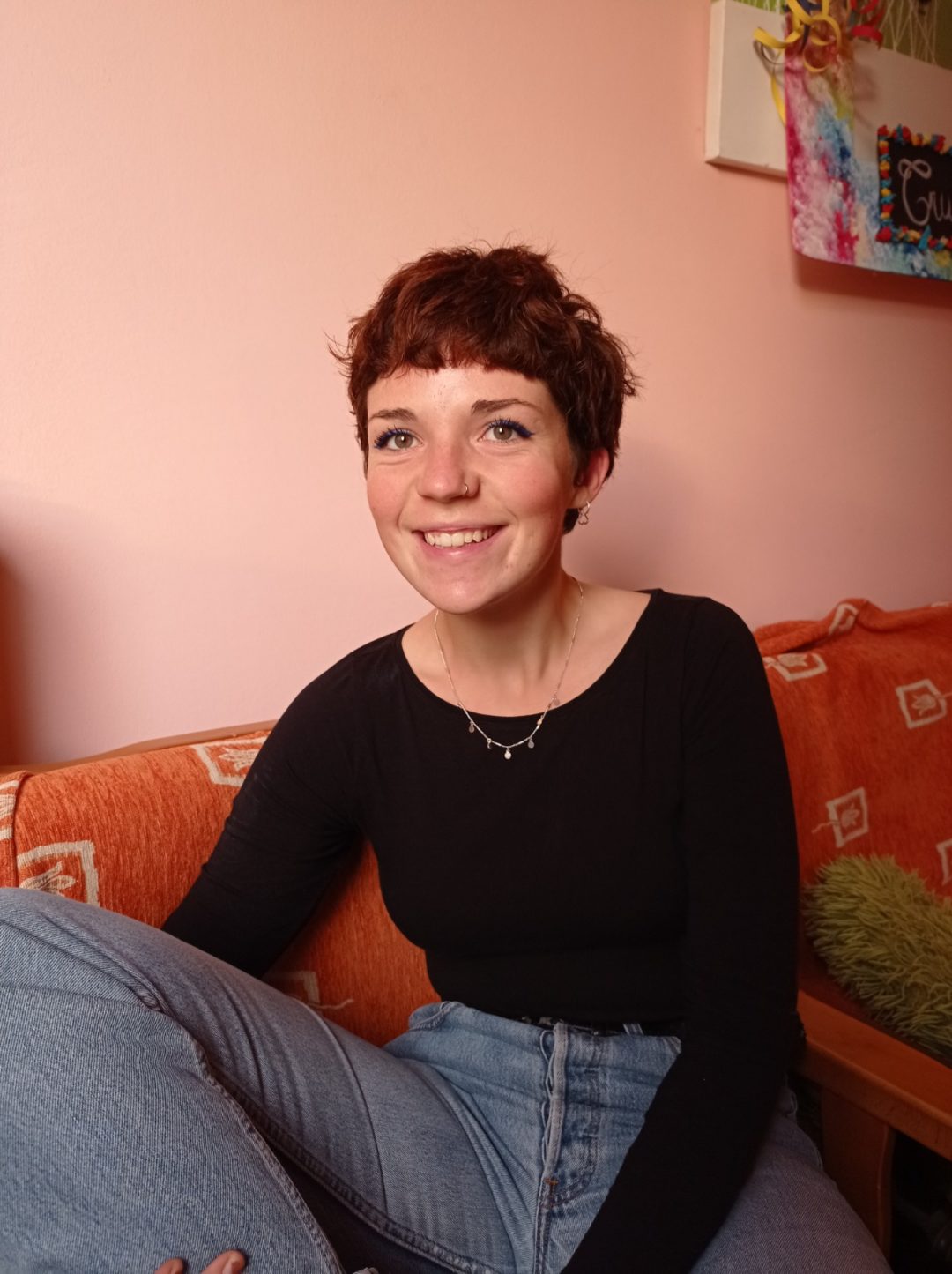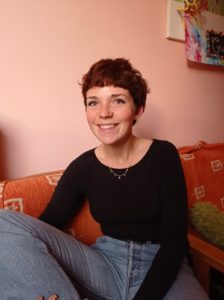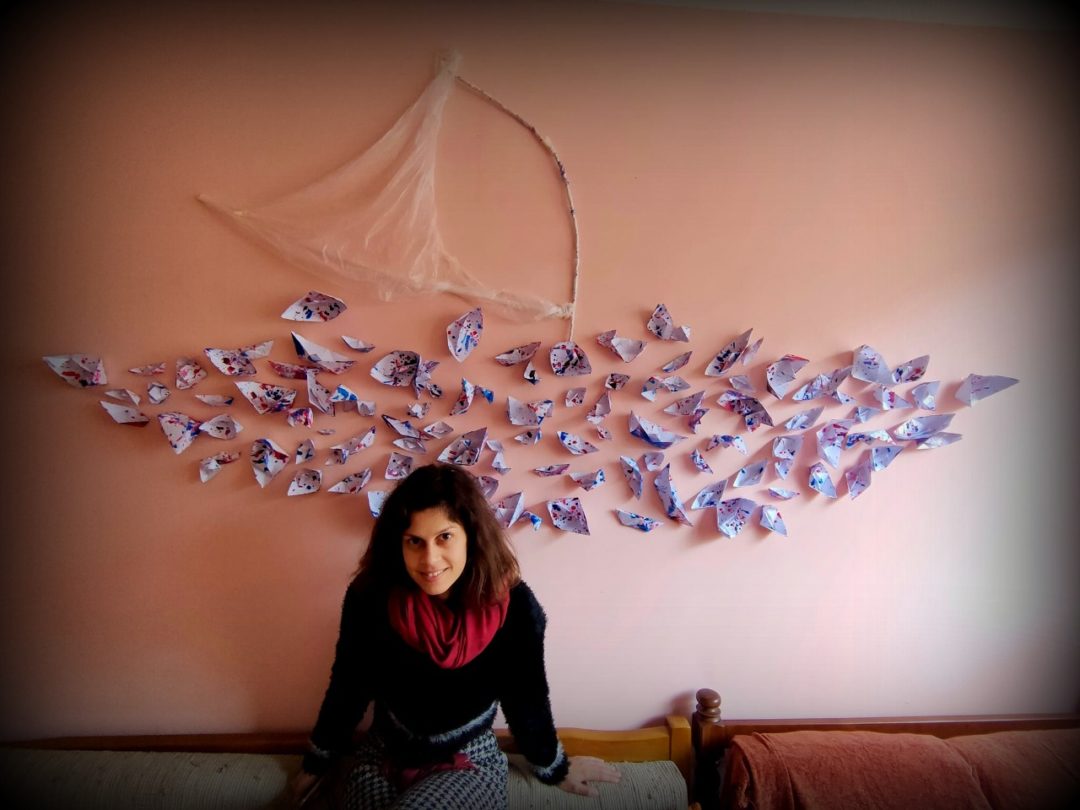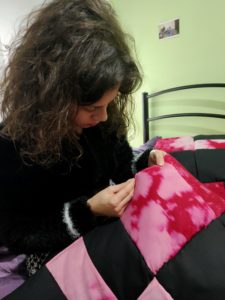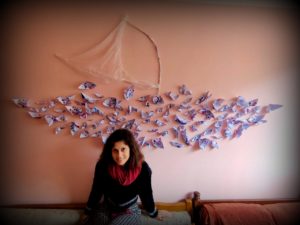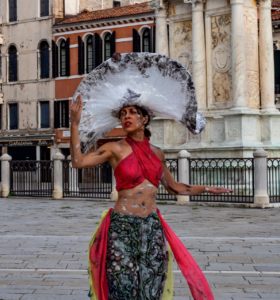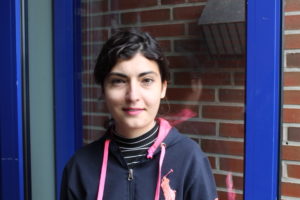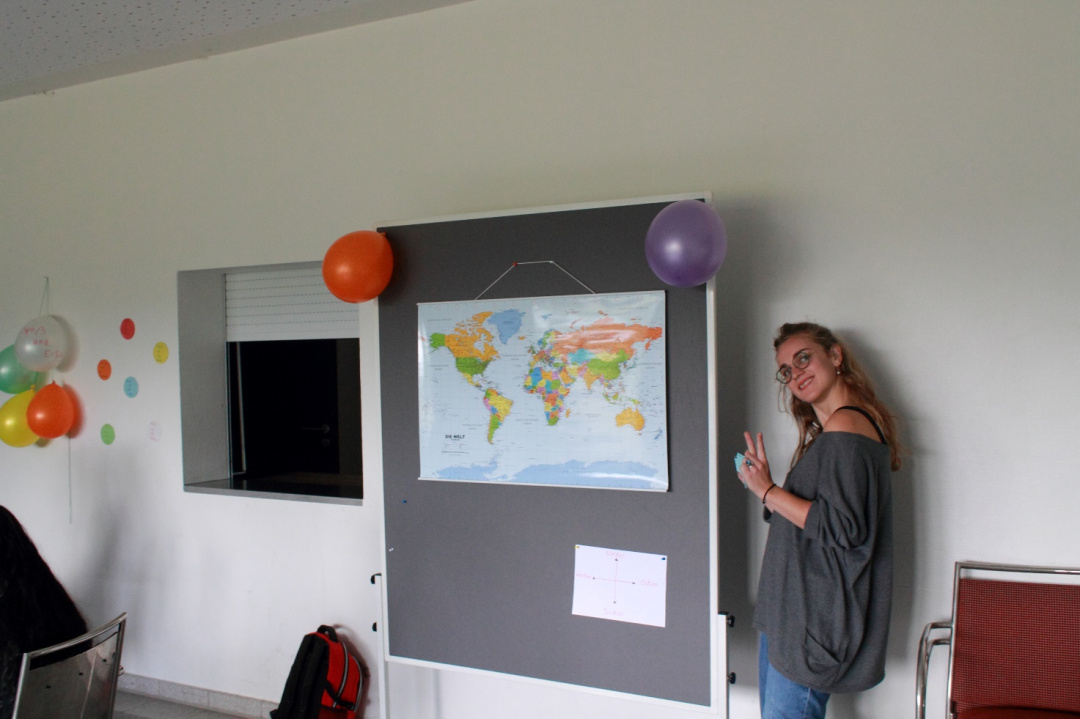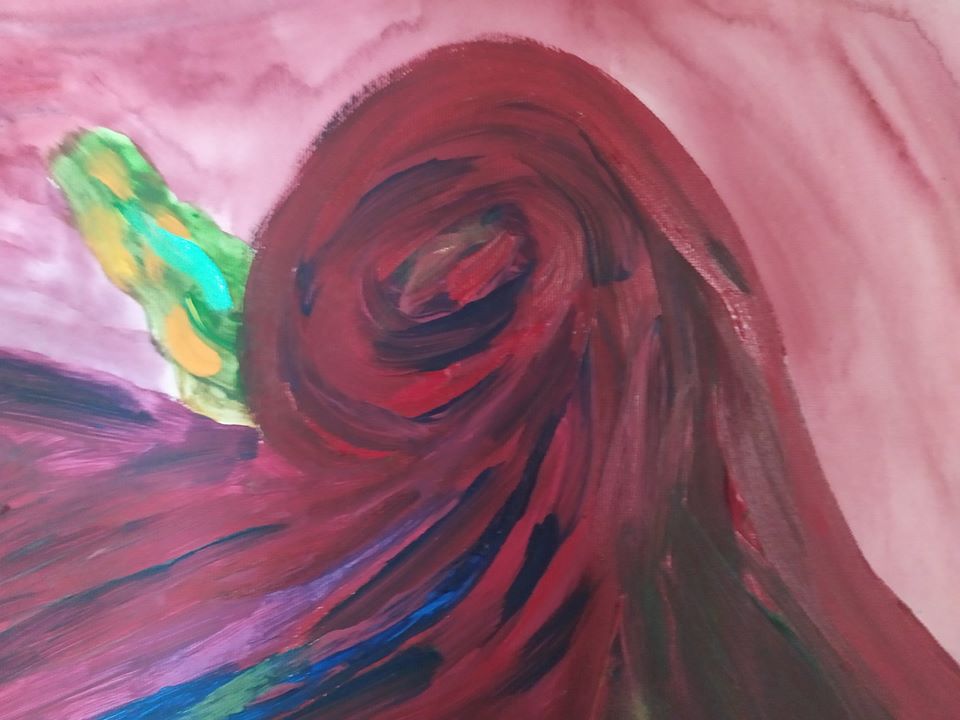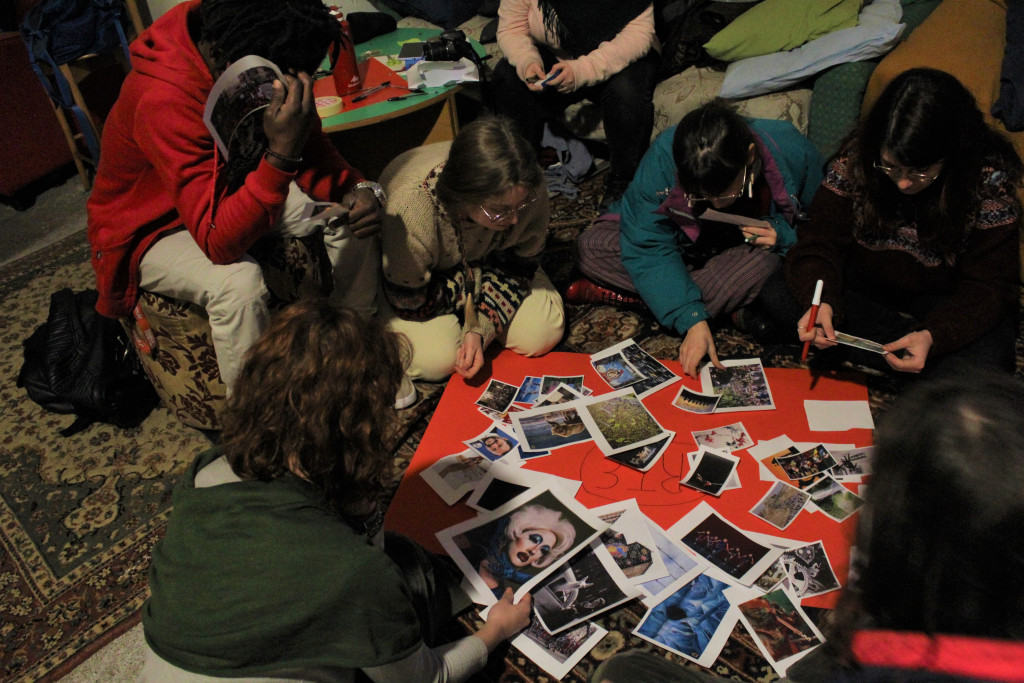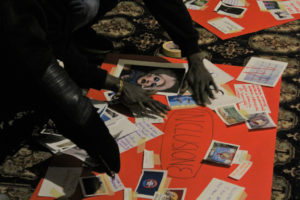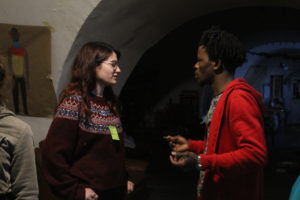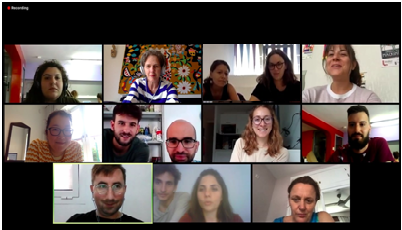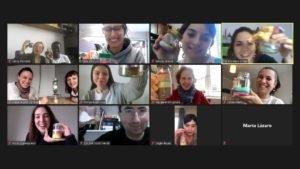
Five days of Training Course: a description
A brief report about the Training Course
For five days, between the dates 15th and 21st October 2020, two Youth Workers per each partner organization met in front of a camera to attend the Training Course online. The short-term-joint-staff training event focused on two key moments:
- sharing the results of the Action-Research activity (IO1) and
- learning about Arte Migrante methodology.
Per Esempio Onlus led the event as Hosting Organisation and, with the help of Arte Migrante representatives, prepared the training based on the Arte Migrante methodology.
Each training day has been introduced by an ice-breaking and energizing exercise that created some sort of link among the participants (which, remember, are located in Italy, Spain, Greece, France, Germany, and England) disregarding the physical distance. One last activity before closing the daily session was the debriefing leading to self-reflection that participants conducted into small groups specifically created.
The first training day aimed to getting to know each other and learning more about the project developed within the Erasmus + Programme. Other topics approached were the concept of life-long learning and the key competences within the Youthpass certificate; in this sense, the participants had the opportunity to develop a personal learning plan.
Remarkably, since the very beginning, the cooperation among the team lead to overcome easily any technical problem encountered during the first online training ever realized by the partners.
During the second training day, the first half of the session has been dedicated to introducing the concept of e-mentoring that is going to support the piloting phase and the implementation of the youth activity. Asociación Caminos was in charge of the presentation and will lead the following e-mentoring meetings too. Definitely, the combination of mentoring and e-mentoring can be considered the most flexible option given the current health situation globally.
Then, each partner organization had the possibility to relate the results obtained from the Action-Research phase. At the end, such results have been analysed and structured in the following visual way using the SWOT Analysis template:
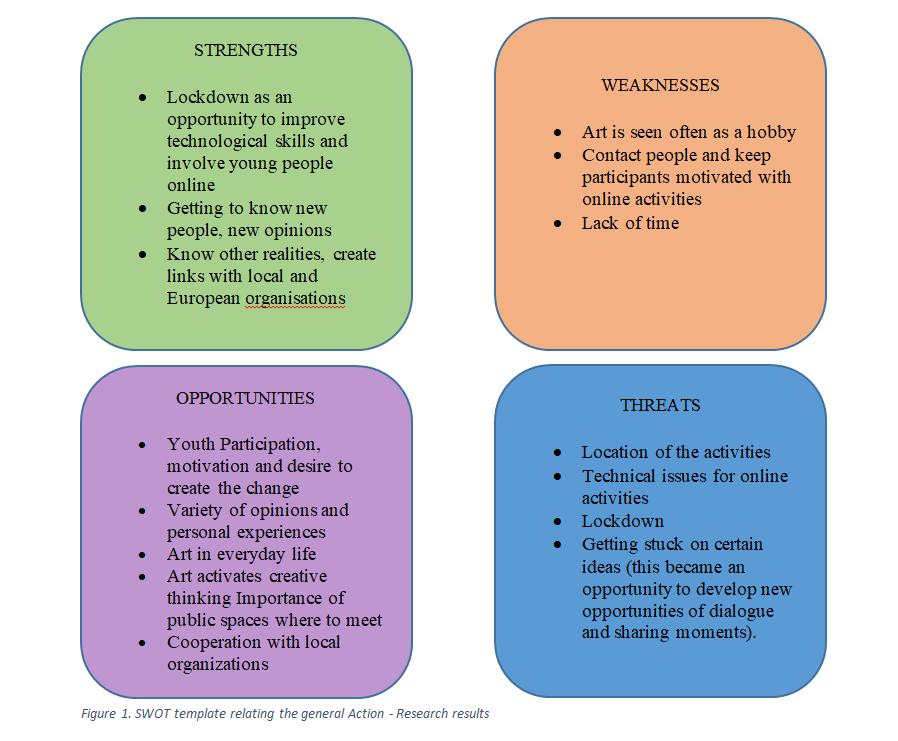
The second half of the day has been dedicated to a brainstorming activity aiming at developing a key idea of what Art is, starting from the personal experience of each participant. In fact, each Youth Worker described the way he or she expresses personal ideas through artistic creations.
This can be considered a sort of introduction to the third day, when the Youth Workers involved had the opportunity to attend an Arte Migrante simulation, hear more about this kind of events and get their doubts or questions clarified.
But what it the methodology that supports Arte Migrante events? Once the frequency has been established (weekly, semimonthly, monthly…), there are three phases that are repeated each time:
- Games that work as icebreakers
- Shared meal
- Artistic expression of the oneself
It is important to stress out that this is a non-judgemental moment of caring and confrontation: people come to be together and find friends inside the community. The Arte Migrante events are intended as a spontaneous meeting and a safe space for sharing, this is why there are not too many fixed rules. At the same time, specifically for logistic purposes, is required to create a coordinating group in charge. During the presentation the founder of the first Arte Migrante event, Tommaso Carturan, gave his speech telling more about how the whole project was developed and why.
After the break, a first chunk of three of the partners organisations presented their own stories of successful projects related to Art and Inclusion. Each presentation triggered a deep discussion about the Good Practices developed within.
The rest of the partner organisations had the opportunity to relate their own experience the next day. The fourth day was also a moment for self-reflection: it has been asked to the participants to describe in which role they see themselves during the development of the Arte Migrante project.
This was the premiss for the last day of the training course, particularly focused on planning the following steps. Participants discussed the management of the piloting phase (this also included setting deadlines and a first meeting for the e-mentoring). It has been very important to outline a first Coordinating Meeting and a first public Arte Migrante Event. That’s how participants confronted their work with some critical points concerning especially the restrictions imposed by covid-19 outbreak and tried to come up with a solution together.
It has been remarked that the non-formal activities should involve young people, whose profile has been outlined during the Action- Research phase, and should touch topics such as:
- Art and Culture
- Artistic expression of the oneself
- Overcoming stereoptypes and prejudices
It’s very important to discuss these topics with the young people involved. During a series of workshops the debate around these themes should be ignited and it’s expected prepare them for the coordination of the event. The desired result is to develop a sense of initiative into these young people.
After the break participants heard the stories of coordinators coming from other Arte Migrante experiences under the section “Inspirational Talks”. This has been another moment of reflection, discussion and solution of doubts.
Finally, before the goodbyes, one last debriefing took place: the Youth Workers took some time to reflect on the 8 key competences of the Youth Pass they acquired or enhanced, in a very peculiar way: first, they assigned one colour to each specific competence and then filled a jar with the sand in the respective colours. Each one of the participants created a unique output as the amount of sand poured in reflected his or her personal assessment.
Have a look!
The article has been written by Chiara Parrucci, participant in the training course from USB. The
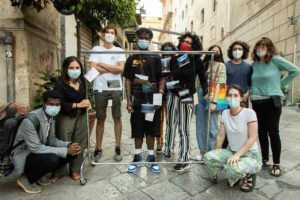
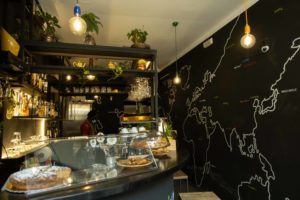
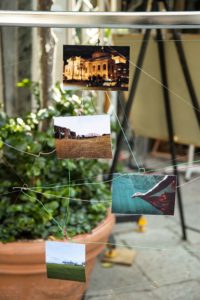 For P. it was an opportunity to bring out the creative part of himself, unexpectedly: I felt free to express myself, to be myself. I was able to authorise myself to use the language of art and colours, an experience that is often wrongly judged childish.
For P. it was an opportunity to bring out the creative part of himself, unexpectedly: I felt free to express myself, to be myself. I was able to authorise myself to use the language of art and colours, an experience that is often wrongly judged childish.